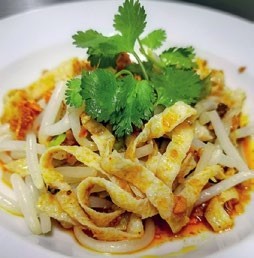We zoom in on one chef who’s recreating well treasured recipes.


Like fashion or music, trends in cuisine also come and go. The reasons for dishes disappearing off menus these days range from changing consumer tastes to restaurants abandoning them because of the sheer amount of work needed to produce them. Sometimes, too, recipes are lost – a common occurrence in the pre-Internet era – or closely guarded by chefs who prefer to keep their culinary secrets instead of sharing them with the next generation.
One person who’s opted to preservemany of the dishes and techniques he’s picked up in his 40-year career of preparing Cantonese food is executive chef Mok Kit Keung of Shangri-la Hotel Singapore’s Shang Palace. The 55 year-old says, “In the past, we never had a proper recipe; only verbal instructions from head chefs. They kept secrets and often added extra ingredients when no one was looking. Now, I make it a point to document each recipe for the next generation.”
Mok has even dedicated an entire section of Shang Palace’s menu to reviving lost and forgotten recipes based on memories of the flavours he enjoyed in the past. One such dish is the pheasant roll – a creation that, strangely enough, doesn’t even contain the bird. Originating from Daliang in Guangdong, the dish is made with pork fat, pork marinated in rose wine and fermented beancurd, and jinhua ham. Everything is sliced paper-thin, layered and then rolled together before being steamed, chilled and deepfried.
At the restaurant, Mok serves these crispy, flaky rolls alongside another Daliang speciality, sauteed milk with egg whites and crab meat.
Mok first encountered pheasant rolls in 1977 when he entered the restaurant business at the age of 13. He says, “I saw the chefs preparing these thin slices of pork fat, and was absolutely amazed by their knife skills.” In fact, dexterity and patience are key to many old-school Chinese dishes. A master chef uses the same inappropriately-large cleaver to perform every task from butchering chicken to shredding ingredients into thread-like strands.
Another dish on Mok’s menu features an entire quail that’s deboned with the entire skin intact, stuffed with bird’s nest and cooked in superior stock.
Why go to all this trouble? Mok explains: “By including these in the menu, everyone – from the chefs to the service team, and the diners – will benefit from the storytelling. Older guests will enjoy a nostalgic journey that brings back memories, and the younger generation will learn, appreciate and preserve the tradition.”
01 LOST AND FOUND



Other restaurants championing disappearing dishes.
01 COMPLEX LAYERING: MIN JIANG
Once popular banquet choices over three decades ago in Singapore, dishes featuring the layering of ingredients are now the purview of just a small handful of restaurants. Goh Chee Kong, master chef at the stalwart Min Jiang offers a Heritage Treasures Platter that includes a Scotch egg-like construction of salted egg yolk ensconced in freshly-peeled crab meat, then chicken liver marinated in rose wine as well as oyster sauce, and, finally, a layer of breading.
02 ARDUOUS BOILING FOR ASPIC: ZUI YU XUAN
Sometimes, even new restaurants try old dishes. At Zui Yu Xuan Teochew Cuisine, you’ll find pig’s trotter jelly. Making this requires time as pig’s feet along with the skin, connective tissue, bones, and meat are boiled for up to eight hours to extract the natural collagen. Everything is then picked off the bones, and recombined with the rich, gelatinous stock that solidifies into aspic once chilled in the fridge.
03 BEATEN BY HAND: HUAT KEE
On the seasonal menu at Teochew Restaurant Huat Kee is another rare find: fish “noodles”, a labour-intensive preparation of pure fish meat that is painstakingly scraped off the bone and then beaten by hand into a paste without the addition of flour. Huat Kee’s chef and managing director Lee Chiang Howe serves it tossed simply in fish sauce and chilli so diners can actually taste the yellowtail and wolf herring (ikan parang).























